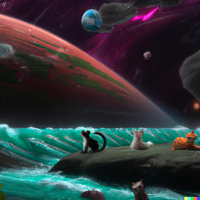Spaces:
Runtime error
Runtime error
| import matplotlib.cm as cm | |
| import torch | |
| import gradio as gr | |
| from models.matching import Matching | |
| from models.utils import (make_matching_plot_fast, process_image) | |
| torch.set_grad_enabled(False) | |
| # Load the SuperPoint and SuperGlue models. | |
| device = 'cuda' if torch.cuda.is_available() else 'cpu' | |
| resize = [640, 640] | |
| max_keypoints = 1024 | |
| keypoint_threshold = 0.005 | |
| nms_radius = 4 | |
| sinkhorn_iterations = 20 | |
| match_threshold = 0.2 | |
| resize_float = False | |
| config_indoor = { | |
| 'superpoint': { | |
| 'nms_radius': nms_radius, | |
| 'keypoint_threshold': keypoint_threshold, | |
| 'max_keypoints': max_keypoints | |
| }, | |
| 'superglue': { | |
| 'weights': "indoor", | |
| 'sinkhorn_iterations': sinkhorn_iterations, | |
| 'match_threshold': match_threshold, | |
| } | |
| } | |
| config_outdoor = { | |
| 'superpoint': { | |
| 'nms_radius': nms_radius, | |
| 'keypoint_threshold': keypoint_threshold, | |
| 'max_keypoints': max_keypoints | |
| }, | |
| 'superglue': { | |
| 'weights': "outdoor", | |
| 'sinkhorn_iterations': sinkhorn_iterations, | |
| 'match_threshold': match_threshold, | |
| } | |
| } | |
| matching_indoor = Matching(config_indoor).eval().to(device) | |
| matching_outdoor = Matching(config_outdoor).eval().to(device) | |
| def run(input0, input1, superglue): | |
| if superglue == "indoor": | |
| matching = matching_indoor | |
| else: | |
| matching = matching_outdoor | |
| name0 = 'image1' | |
| name1 = 'image2' | |
| # If a rotation integer is provided (e.g. from EXIF data), use it: | |
| rot0, rot1 = 0, 0 | |
| # Load the image pair. | |
| image0, inp0, scales0 = process_image(input0, device, resize, rot0, resize_float) | |
| image1, inp1, scales1 = process_image(input1, device, resize, rot1, resize_float) | |
| if image0 is None or image1 is None: | |
| print('Problem reading image pair') | |
| return | |
| # Perform the matching. | |
| pred = matching({'image0': inp0, 'image1': inp1}) | |
| pred = {k: v[0].detach().numpy() for k, v in pred.items()} | |
| kpts0, kpts1 = pred['keypoints0'], pred['keypoints1'] | |
| matches, conf = pred['matches0'], pred['matching_scores0'] | |
| valid = matches > -1 | |
| mkpts0 = kpts0[valid] | |
| mkpts1 = kpts1[matches[valid]] | |
| mconf = conf[valid] | |
| # Visualize the matches. | |
| color = cm.jet(mconf) | |
| text = [ | |
| 'SuperGlue', | |
| 'Keypoints: {}:{}'.format(len(kpts0), len(kpts1)), | |
| '{}'.format(len(mkpts0)), | |
| ] | |
| if rot0 != 0 or rot1 != 0: | |
| text.append('Rotation: {}:{}'.format(rot0, rot1)) | |
| # Display extra parameter info. | |
| k_thresh = matching.superpoint.config['keypoint_threshold'] | |
| m_thresh = matching.superglue.config['match_threshold'] | |
| small_text = [ | |
| 'Keypoint Threshold: {:.4f}'.format(k_thresh), | |
| 'Match Threshold: {:.2f}'.format(m_thresh), | |
| 'Image Pair: {}:{}'.format(name0, name1), | |
| ] | |
| output = make_matching_plot_fast( | |
| image0, image1, kpts0, kpts1, mkpts0, mkpts1, color, | |
| text, show_keypoints=True, small_text=small_text) | |
| print('Source Image - {}, Destination Image - {}, {}, Match Percentage - {}'.format(name0, name1, text[2], len(mkpts0)/len(kpts0))) | |
| return output, text[2], str((len(mkpts0)/len(kpts0))*100.0) + '%' | |
| if __name__ == '__main__': | |
| glue = gr.Interface( | |
| fn=run, | |
| inputs=[ | |
| gr.Image(label='Input Image'), | |
| gr.Image(label='Match Image'), | |
| gr.Radio(choices=["indoor", "outdoor"], value="indoor", type="value", label="SuperGlueType", interactive=True), | |
| ], | |
| outputs=[gr.Image( | |
| type="pil", | |
| label="Result"), | |
| gr.Textbox(label="Keypoints Matched"), | |
| gr.Textbox(label="Match Percentage") | |
| ], | |
| examples=[ | |
| ['./taj-1.jpg', './taj-2.jpg', "outdoor"], | |
| ['./outdoor-1.JPEG', './outdoor-2.JPEG', "outdoor"] | |
| ] | |
| ) | |
| glue.queue() | |
| glue.launch() |
